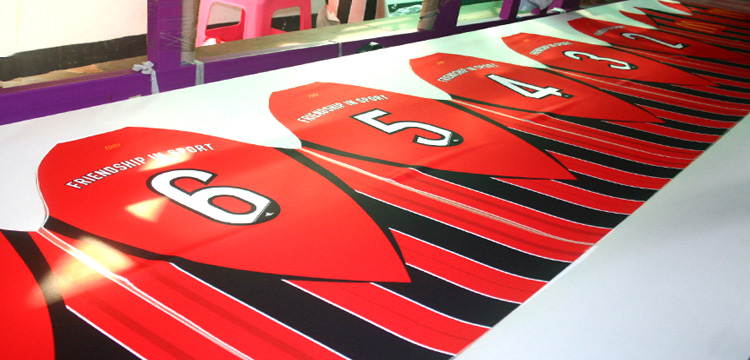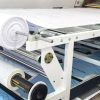Heat sublimation clothing customization is a method of printing patterns or designs on clothing through heat sublimation technology. The following is a detailed introduction to heat sublimation clothing customization:
1.The principle of heat sublimation technology
Heat sublimation is a printing technology that uses high temperature to convert dyes into gaseous state so that they can penetrate into the fabric fibers. The specific steps are as follows:
- Design and production: First design the pattern on the computer and use special software to adjust the color and size.
- Print transfer paper: Print the design on special transfer paper.
- High temperature transfer: Place the transfer paper on the clothing and heat it at high temperature (usually 180-200°C) through a heat press to sublimate the dye and penetrate the fiber.
- Cooling and setting: After cooling, the pattern is permanently fixed on the clothing.
2.Applicable fabrics
Heat sublimation technology is best suited for polyester or polyester blended fabrics because polyester fibers can better absorb dyes at high temperatures. Pure cotton or natural fibers have poor results.
3.Advantages
- High definition: The pattern details are clear and the colors are bright.
- Durability: The pattern is not easy to fade or fall off, and it is washable and wear-resistant.
- Breathability: The dye penetrates into the fiber and does not affect the breathability of the fabric.
- Personalization: Suitable for small-batch customization to meet personalized needs.
4.Application areas
- Sportswear: Commonly used for sports team uniforms, fitness clothes, etc.
- Promotional clothing: Used for corporate activities, exhibitions, etc.
- Fashion clothing: Designer brands are used for unique pattern design.
- Personalization: Personalized T-shirts, hats, etc.
5.Precautions
- Fabric restrictions: Mainly applicable to polyester fibers, pure cotton has poor effect.
- Color restrictions: Light-colored patterns printed on dark fabrics have poor effect.
- Equipment requirements: Special printers and heat presses are required, and the initial investment is high.
6.Environmental protection
Thermal sublimation technology is relatively environmentally friendly because the dye is almost completely absorbed by the fiber, there is less waste, and no water is used, reducing water resource consumption.
Summary:
Dye-sublimation customized clothing is widely used in many fields due to its high clarity, durability and personalization advantages. Although there are some restrictions on fabrics and colors, it performs very well on polyester clothing.



